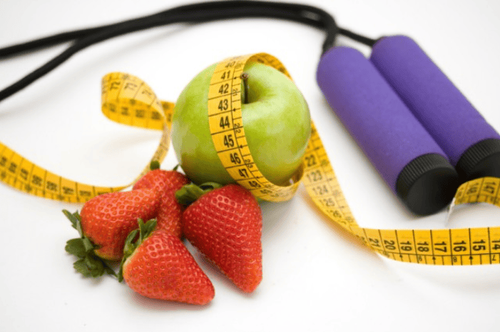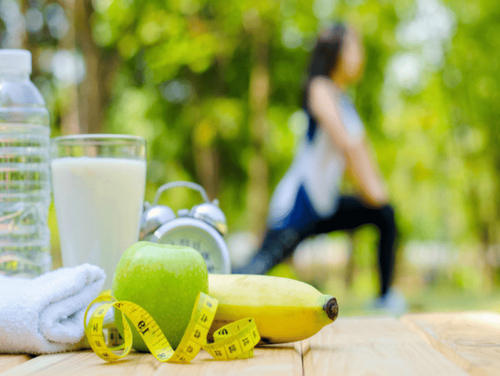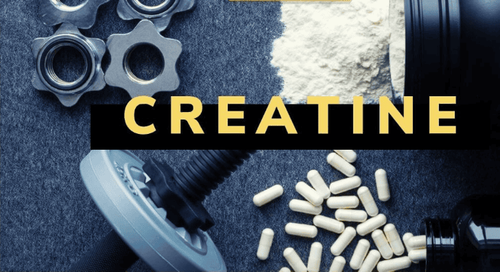This is an automatically translated article.
Health and fitness experts have compiled a beginner's gym guide. Basic content includes definitions of some common training terms, sample exercises, and recommendations for choosing home equipment.
1. Assess your capacity and goals
The first step to a beginner's gym is to assess your suitability for your chosen form of physical activity. People with health risks, such as men ≥ 45 years old and women ≥ 55 years old, should consult a doctor before starting to exercise.
With the right type of exercise, no matter what medical condition you have, it tends to get better. The Heart Health Foundation recommends at least 30 minutes of moderate-intensity physical activity, such as walking, most days of the week. However, if you exercise less, you will still get benefits. Being active for even 5 to 10 minutes is better than just sitting still.
After assessing your fitness, the next step is to set clear and realistic training goals. For example, you want to run a 5km marathon, go to the gym 5 times a week or just walk around the building or neighborhood you live in.
Always use caution when initiating any new exercise regimen. Start an effective gym routine with simple, slow goals. Many people who start working out in the gym make the mistake of being too aggressive, stopping only when they're tired, in pain, or injured. Some people are easily discouraged by the assumption that an intense workout will bring immediate results.
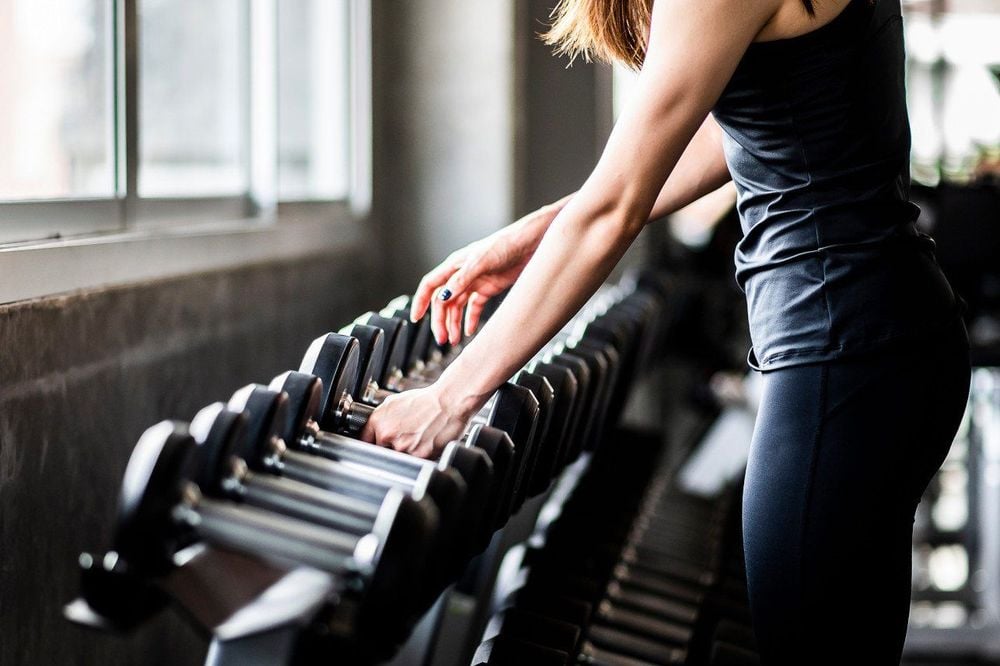
Bạn cần có một lịch tập phù hợp với bản thân
In general, when it comes to getting into an exercise program too quickly, people tend not to stick with it for the long haul. Therefore, you need to know what you really want to do, and gradually develop it into a habit that you can stick with for a long time, even a lifetime.
2. Definition of some terms
Even people who already have a lot of exercise experience can make the mistake of defining some fitness terms correctly. The meanings of some words and phrases that you may come across in gym manuals are:
Aerobic / cardio: These are exercises that temporarily increase breathing and heart rate. Jogging, cycling, walking, swimming and dancing also fall into this category; Maximum heart rate: Estimates maximum heart rate based on a person's age, the formula is to subtract the age from 220. This is the maximum heart rate limit that the heart can reach during strenuous exercise; Stretching: This form of exercise helps to increase the range of motion of the joints, simply known as flexibility. Age and inactivity tend to shorten muscles, tendons, and ligaments over time. Stretch and warm-up are not synonymous terms. Stretching muscles and joints without a warm-up warm-up can leave you vulnerable to injury; Strength training: Type of exercise that aims to improve muscle strength and function. Each specific exercise will target each muscle group. Lifting weights, push-ups, and resistance bands are examples of strength training activities;
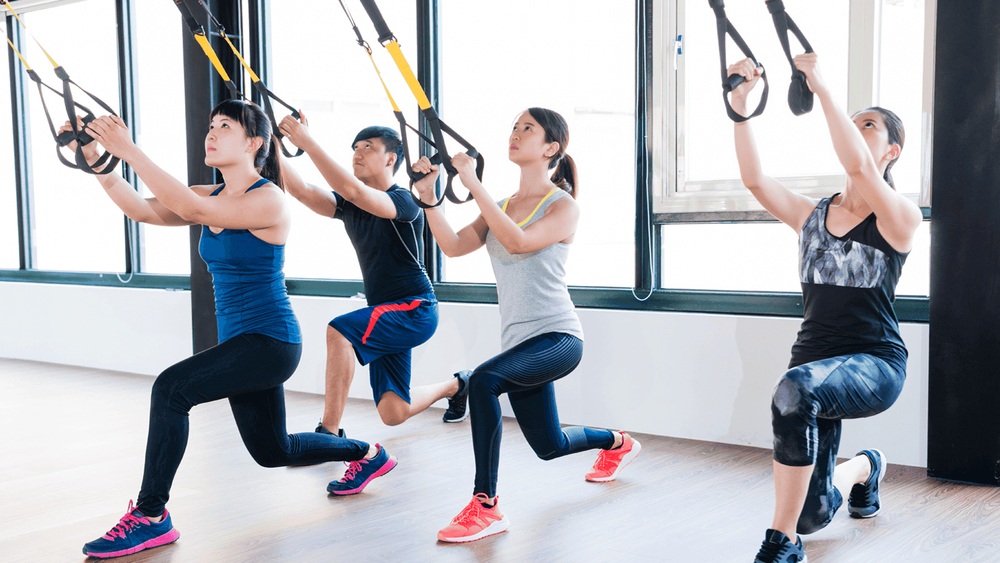
Những bài tập giúp tăng tốc nhịp thở và nhịp tim tạm thời như Aerobic
3. Sample exercises for beginners
Before starting any exercise, it's important to warm up, then do some gentle stretching.
Once the body has warmed up, experts recommend doing 3 different types of exercises for overall fitness: cardio, strength training and stretching to help keep bones and joints flexible. All of these movements don't have to be done at the same time, but repeating them regularly will make your gym schedule more effective.
Cardio: Start doing an activity like walking or running, for 20-30 minutes continuously, 4-5 times/week. To make sure you're working out at optimal levels, try the "talking test". Specifically, you need to continue to have a basic level of conversation while doing the exercises. But if you can easily complete a song while practicing, you need to increase the intensity of your practice. Muscle strength training: Focus on each major muscle group. Choose a weight that you can comfortably do 8-12 reps in one go. When you can lift more, gradually increase the weight, the number of reps, or the number of reps. To maximize benefits, train with weights at least twice a week. Do not exercise the same muscle group 2 days in a row because the muscles need time to rest and recover. Muscle tension: You should perform slow stretching and balancing movements, each time lasting 10 - 30 seconds, with a frequency of 3 - 7 days/week.
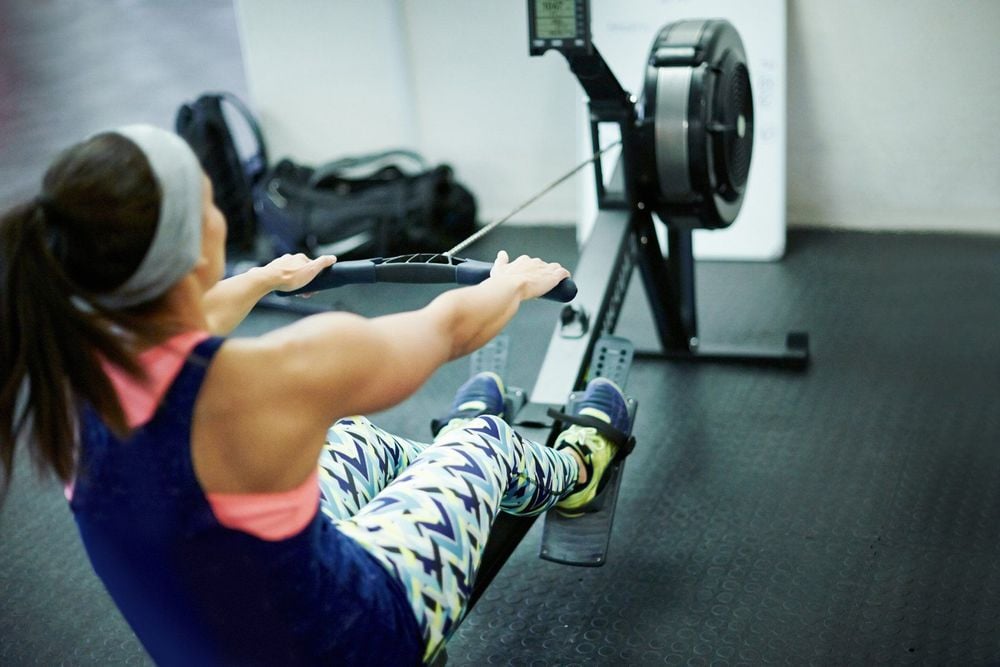
Các bài tập căng cơ cần tập với tần suất phù hợp
To learn the specific steps to perform each exercise, you should hire a personal trainer to guide you for 1-2 sessions, or take advantage of the free trial sessions promoted by the center, please refer to the following links: Reputable websites and videos.
4. Recommend choosing home exercise equipment
An effective gym schedule doesn't have to be done at the gym. You can practice at home to feel more comfortable and save money. And with simple exercises like squats, lunges, push-ups, and sit-ups, you can use your own strength to build muscle. To enhance the all-round effectiveness, you can also invest in some home exercise equipment, such as:
Treadmill: This is the best selling exercise equipment, very good for health cardiovascular health. You should start walking at a low pace for 30 minutes and use the "talk test". Depending on the test results, you can adjust the speed, incline and training time to suit your ability. Barbells: Bars and dumbbells are recommended muscle training equipment for beginners in the gym. You can buy a set of adjustable 8kg dumbbells, each increments about 1kg.
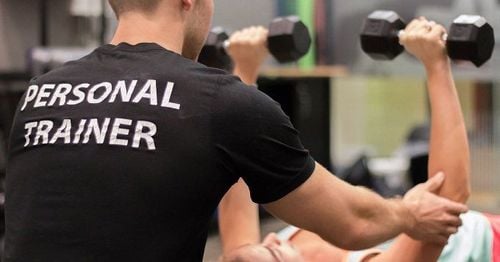
Bạn có thể tập tại nhà với những khối tạ phù hợp với mức tập luyện
Exercise ball: This device appears in many gym tutorials. Usually beginners in the gym will use the ball incorrectly, unable to hold it, causing the ball to fall off. But if you like to practice with a ball, this is a good choice; Video tutorials: Currently, gym training videos for beginners or how to exercise at home are available for free on online channels. You should check it out at least once to observe and choose the right form of exercise. To improve efficiency, you need to invest in a large mirror to practice, observe and align your movements. If not, you can also ask someone else to watch you while you practice and give advice compared to the tutorial clips, or record a video so you can watch it again. Other equipment: Includes weight stack with cables and pulleys, elastic bands, and flexible sticks. These devices are good for beginners, if you don't know how to exercise, you can follow the instructions that come with the product, or consult the information on how to use it on the internet. But these devices should not be used for long, as your muscles will adapt to the elasticity of the band or stick. That's when you need more of a challenge.
Beginners to the gym don't have to follow a strict regimen, spend all your time at the gym. The truth is that any physical activity benefits and makes you feel better. If you can't go to the gym and have an effective gym schedule guided by a professional trainer, you can also walk, learn to dance, cycle and even do housework. It's important to choose activities that you enjoy, so that you can form a habit without giving up halfway.
Vinmec International General Hospital is not only famous for its quality of medical examination and treatment services but also for having successfully treated many difficult and complicated cases under the guidance of doctors. Professional and experienced doctor. In particular, the medical team is always ready to listen, advise and treat diseases as well as advise on good nutrition and food for all ages according to the individual needs of customers.
Customers can directly go to Vinmec Health system nationwide to visit or contact the hotline here for support.
Reference source: webmd.com





